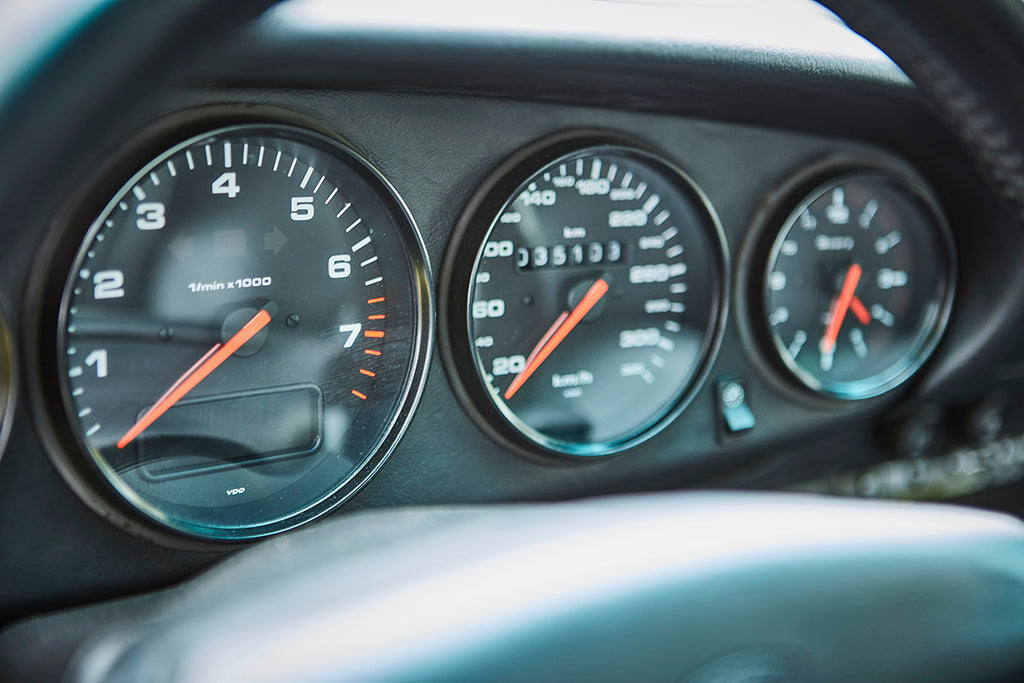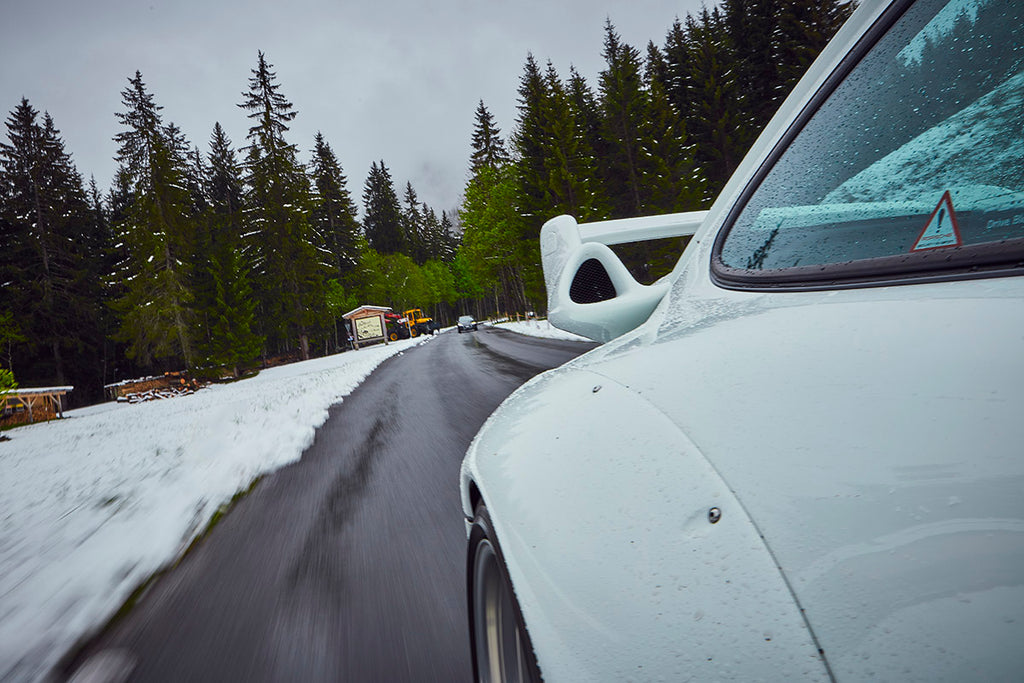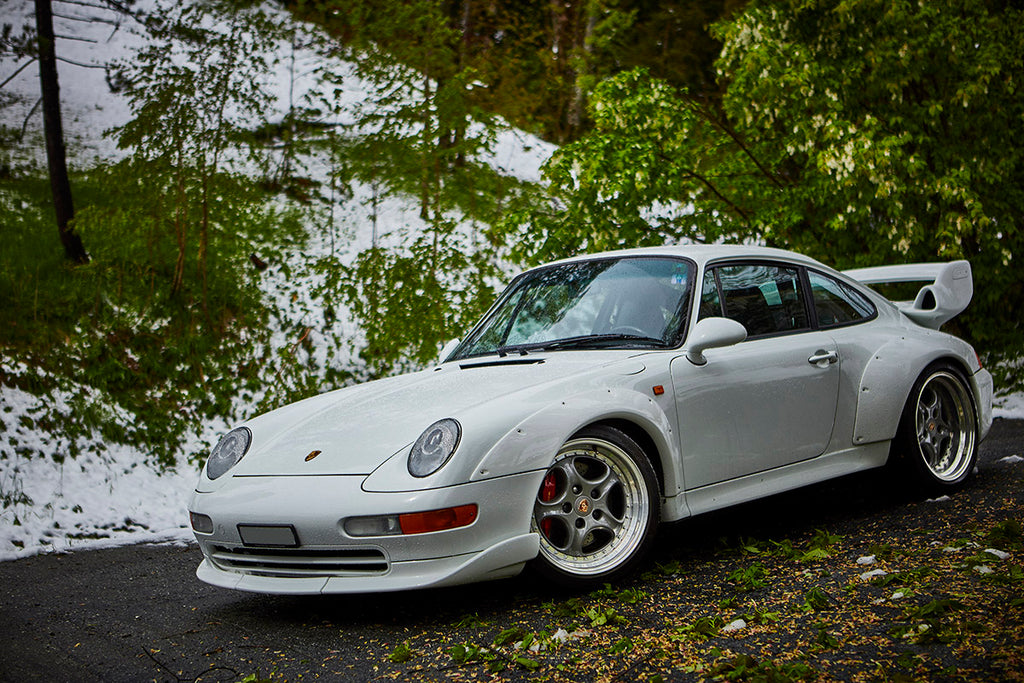The 993 GT2 is arguably one of the most special homologation 911s of all time. We drive a stunning example in Switzerland to verify whether it indeed represents the best 911 of the 90s.
Words: Wilhelm Lutjeharms
Pictures: Charles Russell
When was the golden period for Porsche’s venerable 911? That is a moot question… and your answer will probably depend on when you were born. Some 911 enthusiasts argue that pre-1973 911s are the real deal. Then, for some of us, an impact-bumper series car is the archetypal 911. All things considered, your preference may ultimately be determined by which of the aforementioned models captured your imagination the moment you saw a Porsche “in the wild” for the first time.

I am a member of the latter group, but when I started reading about cars with real intent, it was the end of the 964, advent of the 993 era. The 993 Turbo with its rounded curves really stood out for me, especially since other performance cars of the period were generally very angular in terms of their exterior designs. I thought a 911 couldn’t look any more hunkered down and purposeful than the 993 Turbo, so imagine my sheer jaw-dropping excitement the first time I saw a picture of a 993 GT2!

Note those bolt-on wheel arches (32mm at the front, 30mm at the rear), the wide split-rim, three-piece magnesium-alloy Speedline wheels (here with darkened centre pieces) and a rear wing not unlike those on Porsche’s endurance race cars. “Can you drive this 911 on the road?” It’s a question I first asked myself as a teenager.
The road-going GT2s were built by Porsche to comply with the rules and regulations of international GT-racing formulae, particularly the BPR series for street-legal GT cars. The GT2 race cars’ lineage traces back to the 964-series 911 Carrera RSR and RS 3.8.

And, as was the case with competitively-campaigned 911s that predate it, the GT2 excelled at endurance racing. 1995 was the first year the GT2 participated at Le Mans. Although six GT2s/GT2 Evos didn’t finish the race, three cars took the overall 15th, 16th and 17th places. These achievements lead to class positions of 4th, 5th and 6th. The top-placed car was the white number 77 car from Seikel Motorsport, driven by Guy Kuster, Karel Dolejší and Peter Seikel.
And the GT2’s racing success gained momentum thereafter... In the 1997 24 Hours of Le Mans, the cars achieved 1st, 2nd, 3rd and 4th places in their class at the challenging La Sarthe circuit, which resulted in overall positions of 9th, 10th, 11th and 13th in that year’s race.

Privateers continued to race the GT2s competitively in 1998, 1999 and even in 2000. However, by that time the 996 GT3 R was already on the racing scene. Still, at its final Le Mans race in 2000, a GT2 finished 7th in class — it had proved no match for the mighty Chrysler Viper GTS-R and Corvette C5R — but, significantly, it completed 317 laps, 7 more laps than the GT-class winning Porsche 911 GT3-R. To say it was a successful racer of its time will be an understatement of note.

Made available early April 1995, the GT2 (in Street, as well as Clubsport, versions) was based on the new 993 Turbo, which – incidentally – would only be released a few weeks later. There were notable changes and upgrades compared to the Turbo. The GT2 used the same engine, but power increased from the Turbo’s 300 kW to 321 kW. What’s more, dropping the Turbo’s all-wheel-drive system meant the GT2 was around 200 kg lighter and Porsche claimed a 0-100 km/h acceleration time of 4.4 seconds and a top speed 5 km/h shy of 300 km/h. The GT2 was also 20 mm lower to the ground than the Turbo, while the suspension was now adjustable and a stiffer subframe was fitted at the rear (as well as increased negative camber). The brief was clear, the GT2 had to be a pure driver’s machine, in line with the race car that Porsche intended to take to global race circuits.

This specific GT2 was built in 1995 and is, in GT2 terms, a luxurious “Street” version. Even so, it still tips the scales at only 1 295 kg. Only 172 GT2s were built, and of this small number most were built in 1995. According to the very comprehensive “The Porsche Book” by Jürgen Bath and Gustav Büsing, this chassis number was one of the Rest of World (RoW) cars which featured the M64/60RS engine, developing 335 kW at a higher 6 000 rpm instead of the M64/60s 321 kW at 5 750 rpm.
The car was originally earmarked for the UK. Its current (third) owner bought the car in Europe a decade and a half ago and has kept it in Switzerland since he acquired it.

Although the cabin is sparse in terms of equipment, there is still an audio system, electric windows as well as those legendary door pull straps. As expected, the car has a lot in common with the 993 Turbo, but when you look behind you and see the omission of rear seats you realise you are seated in something special. The half-cage currently in situ was fitted post-factory, but that is of little concern, if there is a car that can make do with a half-cage, it’s a Porsche GT car.
Frosted Alpine roads are a far cry from a dry Le Mans track. As I drive up the twisty mountain road, the GT2’s 235/40 ZR18 front and 285/35 ZR18 rear tyres crush half-molten snow in its path. These aren’t ideal driving conditions for a 335 kW car, so I take care to make extremely sensitive and delicate throttle inputs with my right foot.

Switzerland is fascinating in that sense. When spring comes along, the temperature drops and the snow gets thicker the higher you drive up mountain passes, but, astonishingly, the roads might be bone dry in the valleys below them.
The owner told me that these tyres are actually quite forgiving in wet conditions. I’m thinking on the one hand he is crazy to let me head out with this car in these conditions, but he should be applauded for allowing us to do so.

I heed his advice and slowly push the throttle harder. I’m amazed at how tractable the engine is. Even when the rev needle rests as low as 1 000 rpm in second gear, you can simply squeeze the pedal and the engine will start to push from the rear.
When I flex my right foot I discern some turbo lag, but it is only for a fraction of a second before the urgency of the engine makes itself felt. Beyond 4 000 rpm, the GT2’s engine delivers its true performance in no uncertain terms — with the turbos fully spooled up, the Porsche’s characteristic flat-six soundtrack can be savoured as it bounces from the rock faces. This sound, in conjunction with the turbo noise, reminds you, at every second, of the serious nature of this 90s icon.

In these conditions you need to make sure your front wheels are pointing ahead as the full power delivery can easily overwhelm the rear wheels, albeit briefly, as the road twists and turns down the mountain. Fortunately, the brakes are more than up to the task of lowering your speed, while the pedal also provides good feedback. Switching gears is effortless, as each engagement is slick and the gearlever slots into the respective mechanisms.
The GT2’s steering system feels better connected to the front axle compared to modern cars; it constantly and accurately feeds information to your hands. It is a driving experience in which you want to immerse yourself — as if the car implores you to learn to drive it to its potential over the course of several days… even weeks.

A few years ago I drove the Clubsport version of the 993 GT2. The Street version, as expected, feels almost plush compared to the Clubsport. The cabin is more habitable (as well as better insulated from exterior sounds), and you can easily do a long road trip in this car – that is if supremely-focused 911s are your cup of tea. However, what this GT2 Street does share with the Clubsport is the power delivery, the solid shift action of the gearbox and the overall character and stance of the car.

The release of the 993 GT2 paved the way for some of fastest, most respected, but also most fearsome 911s in history. Let’s not forget that it all started with the 993 version, a road car that incorporated so much of its racing sibling and whose full-slick tyres pounded the various endurance racing tracks across the globe with tremendous success. It undoubtedly deserves all the attention and value it receives today.
Specifications
Model: 993 Porsche 911 GT2
Years: 1995 - 1997
Engine: 3.6-litre, flat-six, turbopetrol
Power: 321 kW at 5 750 rpm
Torque: 540 Nm at 4 500 rpm
Transmission: 6-speed manual, rear-wheel drive
Weight: 1 295 kg
0-100 km/h: 4.4 seconds
Top Speed: 295 km/h

